Benefits of Leaf Mulching
- December 26, 2023
- 0 comment
Transform autumn chores into eco-friendly practices with leaf mulching. Learn how this simple method can improve your lawn’s health and support local wildlife.
Every fall, as the leaves turn and the air chills, homeowners face the inevitable task of raking leaves. Yet, this chore, often seen as a tedious part of autumn, can be transformed into an environmentally friendly and beneficial activity: leaf mulching. David Mizejewski of the National Wildlife Federation suggests that leaf mulching, as opposed to raking, can greatly benefit your lawn and local wildlife.
The Advantages of Leaf Mulching Over Raking
Leaf mulching stands out as a highly beneficial alternative to the traditional autumn task of raking, offering a wealth of advantages for your garden, the environment, and your own well-being.
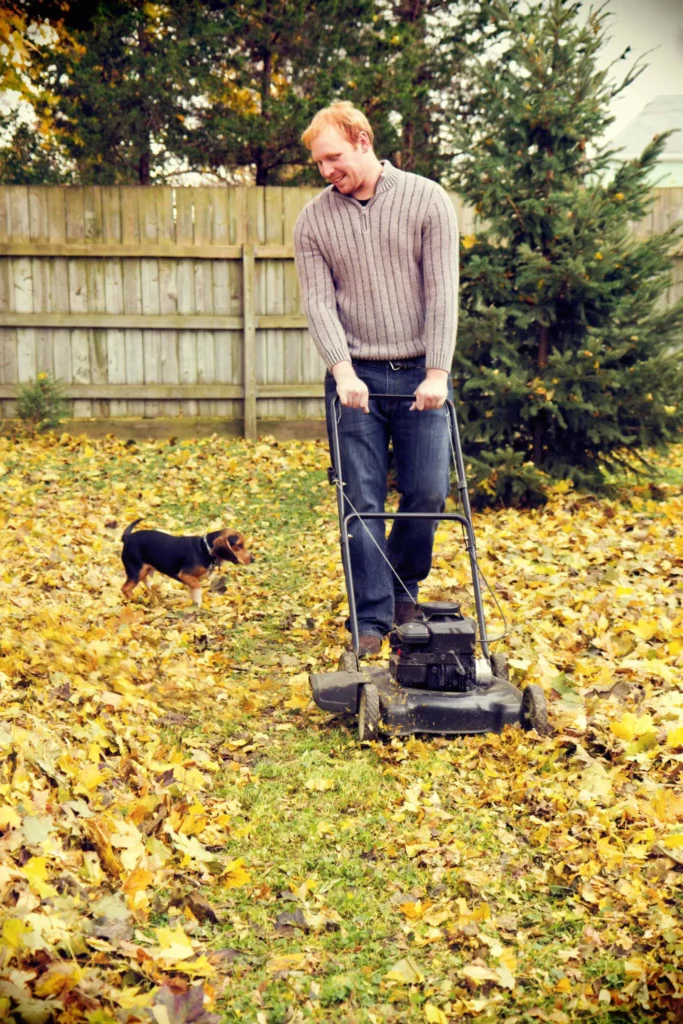
When leaves are mulched, they naturally decompose and become an organic fertilizer, providing essential nutrients to the soil. This process is crucial for enhancing soil structure, improving water retention, and reducing the reliance on chemical fertilizers, thereby leading to a healthier and more vibrant garden. Beyond the benefits to your lawn and garden, leaf mulching plays a vital role in sustaining local ecosystems. It aids in preserving natural nutrient cycles and provides a habitat and food source for beneficial insects, critters, and soil microorganisms.
Furthermore, leaf mulching is a practice that contributes to environmental sustainability. It reduces the necessity of burning leaves or transporting them to landfills, thereby helping to lower greenhouse gas emissions. This eco-friendly approach also offers significant cost savings for homeowners. By mulching leaves, you can reduce the need for plastic lawn bags and avoid the fees associated with leaf disposal, lessening your reliance on municipal leaf collection services.
The practicality of using a lawn mower for leaf mulching cannot be overstated. This method is not only faster but also less labor-intensive compared to traditional raking and bagging. It saves time and energy, allowing for a more enjoyable autumn experience. In addition, the mulch created from leaves serves as an excellent cover for garden beds. It protects plants during colder months, suppresses weed growth, and helps maintain soil moisture, thus reducing the need for frequent watering. This natural mulch also acts as insulation for plant roots, providing a buffer against temperature changes.
For those seeking to optimize their leaf mulching process, consider utilizing lawn mowers equipped with specialized mulching blades. These blades are designed to finely chop leaves and evenly distribute them across your lawn. Various types of mowers, including both electric and gas-powered models, often come with built-in mulching capabilities, making them a versatile and effective tool for this eco-friendly practice.
Step-by-Step Guide to Leaf Mulching with a Lawn Mower
Mulching leaves with your lawn mower is a simple and eco-friendly way to manage fall foliage. Here’s how you can do it effectively:
- Start by leaving a thin layer of leaves on your lawn. This approach prevents the grass from being smothered while still providing enough material for mulching. Use your mower to shred the leaves. While a mulching mower or a mower with a special mulching blade can be more effective in chopping the leaves finely, a standard mower will still do the job.
- Aim to shred the leaves until they’re about the size of a dime. This size ensures that they decompose at a suitable rate, providing nutrients to the lawn without smothering the grass. Depending on your mower and the type of leaves, this might require several passes.
- To avoid an excessive buildup of leaves, which can suffocate the grass, it’s important to mulch regularly during the fall. If you find that the layer of shredded leaves is too thick after mulching, simply attach a bag to your mower and go over the area again. The collected mulched leaves can then be used in garden beds or added to compost piles.
- The great benefit of leaf mulching is that as the shredded leaves decompose, they naturally release nutrients back into the soil. This process enriches the lawn, promoting healthier grass growth. It’s a natural cycle that enhances your lawn’s fertility without the need for artificial fertilizers.
Additional Tips
- Ensure your mower’s blades are sharp for efficient mulching. Dull blades may struggle to effectively shred the leaves.
- For a thorough mulch, mow in different patterns or directions. This helps in evenly distributing the If possible, mulch when the leaves are dry. Wet leaves can clump together and may not shred as effectively.
- Always follow safety protocols while using a lawn mower, including wearing appropriate footwear and eye protection.
Alternative Mulching Methods
While lawn mowers are a popular choice for leaf mulching, there are several other effective tools and techniques that can be utilized:
Stand-alone Mulchers
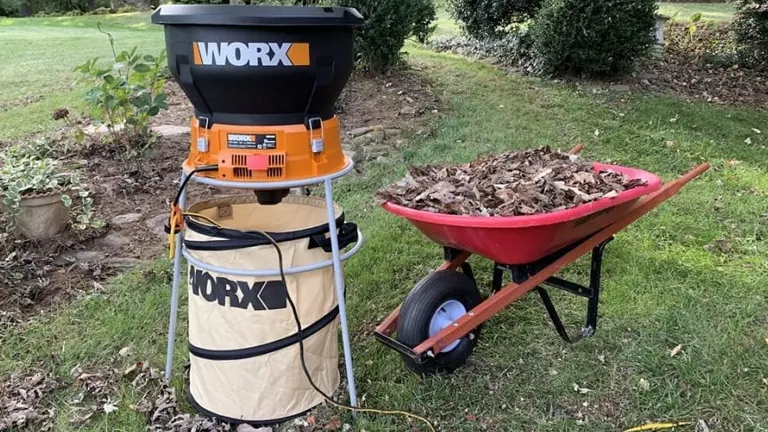
These powerful machines are designed specifically for mulching leaves. They can handle larger volumes of leaves more efficiently than a standard lawn mower. Stand-alone mulchers often come with features like adjustable shredding sizes and collection bags for easy disposal or use in garden beds.
Handheld Mulchers
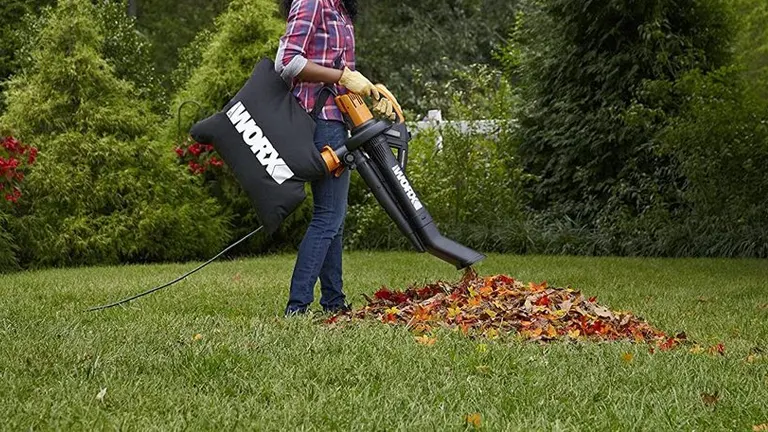
A more portable option, handheld mulchers are ideal for smaller yards or for those who prefer a lightweight tool. Similar to leaf blowers, many models can convert between blowing and mulching functions, making them versatile for yard maintenance.
String Trimmers for Quick Mulching
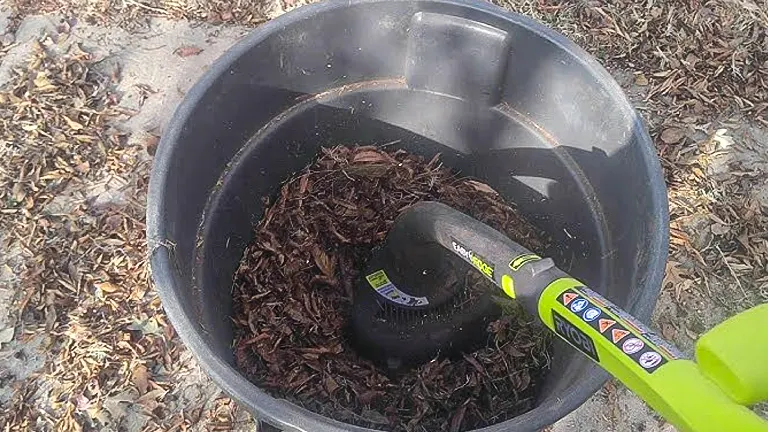
For a quick and easy DIY mulching method, a string trimmer (or weed whacker) can be used. Simply place a pile of leaves in a large container, such as a trash can, and use the string trimmer to shred the leaves. This method is particularly useful for small quantities of leaves and can be a fun way to involve the family in yard work.
Composting Leaves

Leaves are a great addition to compost piles, providing carbon-rich material that balances the nitrogen in kitchen scraps and green yard waste. Shredding the leaves before adding them to the compost accelerates their decomposition and enhances the quality of the compost. Composted leaves create a nutrient-rich humus that can be used to enrich garden soil.
Additional Considerations
- Some models of leaf blowers come with a vacuum and mulching function. These tools can suck up the leaves, mulch them, and collect them in an attached bag, making the process very efficient.
- When possible, choose electric or battery-powered tools over gas-powered options to reduce emissions.
- Regardless of how you create your mulch, remember that it can be used in various ways around the garden, such as mulching around trees and shrubs, in flower beds, or as a protective layer in vegetable gardens.
Practical Tips for Effective Leaf Mulching
- Effective leaf mulching requires a balance between providing enough coverage to benefit the soil and not so much that it hinders grass growth. The key is to avoid over-mulching, as an excessive layer of mulch can smother the grass underneath. It’s important to ensure that the grass blades are still visible through the mulch layer. This balance promotes the decomposition of the leaves while allowing the grass to breathe and receive sufficient sunlight.
- Even distribution of mulch across your lawn is crucial. Concentrated piles or uneven layers can lead to patchy grass growth and potentially create areas where moisture accumulates, leading to issues like mold or fungus. A uniform layer of mulched leaves ensures that all parts of your lawn benefit equally from the added nutrients and soil protection.
- The settings on your lawn mower can significantly impact the effectiveness of your mulching. Setting your mower to a higher setting is advisable when mulching leaves. This height allows the mower to chop the leaves effectively without cutting the grass too short. A higher setting ensures that the grass remains healthy and resilient, and it facilitates better integration of the mulched leaves into the lawn.
- Finally, the thickness of the mulch layer is a critical factor. Aim to leave a thin layer of mulch, approximately one inch, on the lawn. This layer is enough to provide the necessary nutrients as the leaves decompose but not so thick as to obstruct the growth and health of the grass. This thin layer acts as a natural fertilizer, gradually releasing nutrients back into the soil and reducing the need for additional fertilization. By following these practical tips, you can maximize the benefits of leaf mulching for a healthier, more sustainable lawn.
Leaf mulching revolutionizes the traditional chore of leaf raking. By adopting this eco-friendly practice, you not only enhance the health of your lawn and garden but also contribute positively to the local ecosystem. This fall, let’s redefine our approach to fallen leaves. Instead of viewing them as waste to be discarded, see them as a valuable resource, brimming with potential. Embrace leaf mulching and unlock the natural benefits lying at your feet.
FAQs
- What is leaf mulching, and how does it benefit my lawn?
Leaf mulching involves shredding fallen leaves and leaving them on your lawn. This process helps to enrich the soil with nutrients, improves soil health, and encourages a vibrant ecosystem in your garden. - Can all types of leaves be used for mulching?
Most leaves can be used for mulching, but some, like oak and maple, are particularly beneficial due to their nutrient content. However, it’s best to avoid leaves from diseased trees to prevent the spread of plant pathogens. - Do I need a special lawn mower for leaf mulching?
While a lawn mower with mulching capabilities is ideal, a standard lawn mower can also be effective. You may need to make multiple passes to adequately shred the leaves. - How thick should the mulch layer be on my lawn?
Aim for a thin layer, about one inch thick. This is enough to provide nutrients without smothering your grass. - Can leaf mulching replace my regular lawn fertilization?
Leaf mulching can significantly reduce the need for additional fertilization, as decomposing leaves release nutrients. However, depending on your lawn’s specific needs, some supplemental fertilization might still be beneficial. - Is leaf mulching better for the environment than bagging leaves?
Yes, leaf mulching is more environmentally friendly as it reduces the use of plastic bags and prevents leaves from taking up space in landfills. - How does leaf mulching impact local wildlife?
Leaf mulching can create a beneficial habitat for various insects and microorganisms, which are crucial for a healthy ecosystem. - What should I do if my lawn is covered in a thick layer of leaves?
If the leaf layer is too thick, you may need to remove some before mulching. You can redistribute the excess to garden beds or compost piles. - Can mulched leaves cause lawn diseases? Generally, mulched leaves do not cause lawn diseases. However, if you have concerns about specific tree diseases, consult a local arborist or extension service.
- Is it possible to mulch leaves when they are wet?
While it’s possible, wet leaves can clump and are harder to shred effectively. For best results, mulch when the leaves are dry.
We highly value your input and experiences! Please feel free to share your thoughts and personal stories about leaf mulching in the comments section below. Your insights on this eco-friendly lawn care practice are not only welcome but could be immensely helpful to others in our community who are considering adopting this method. Whether it’s about the effectiveness of different mulching techniques, the type of equipment you use, or any tips and tricks you’ve discovered, your feedback is invaluable. Help guide fellow gardening enthusiasts and homeowners by sharing your experiences and advice on leaf mulching, contributing to a richer, more informed discussion about this sustainable approach to lawn care!

David Murray
Forestry AuthorI'm David Murry, a forestry equipment specialist with a focus on chainsaw operation. With over 13 years of experience, I've honed my skills in operating and maintaining a wide range of machinery, from chainsaws to log splitters. My passion for the outdoors and commitment to sustainable forestry drive my work, which emphasizes safety, efficiency, and staying updated with industry advancements. Additionally, I'm dedicated to sharing my expertise and promoting environmental awareness within the forestry community.




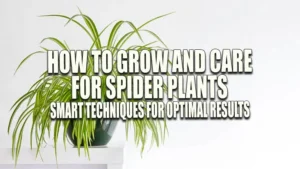
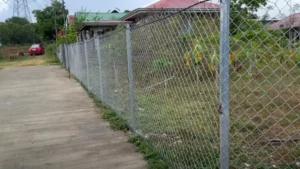

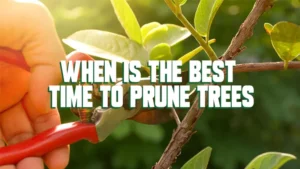
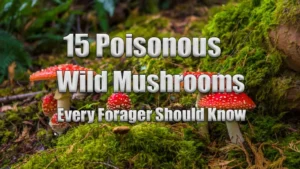


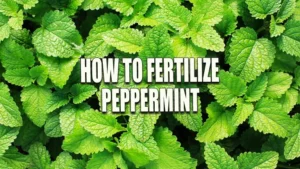

Leave your comment